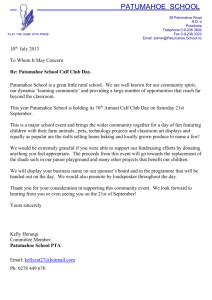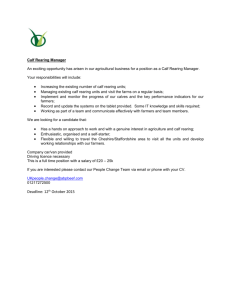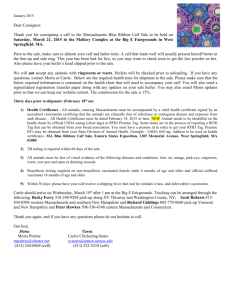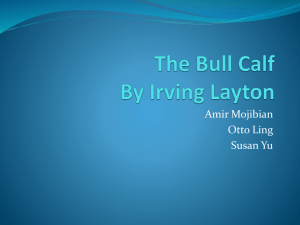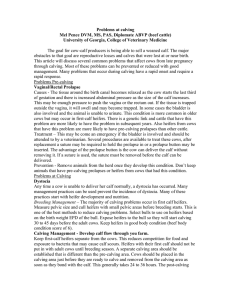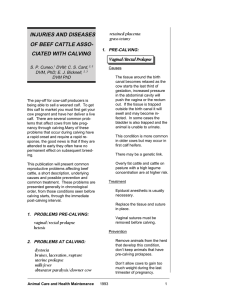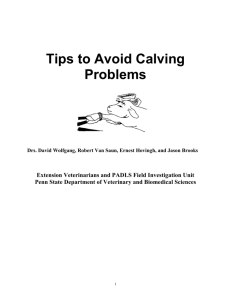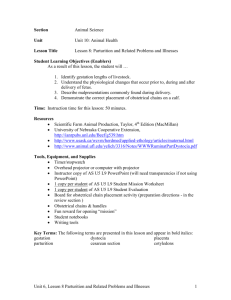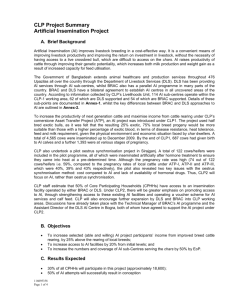"When to Help with Calving" - - TriAg
advertisement
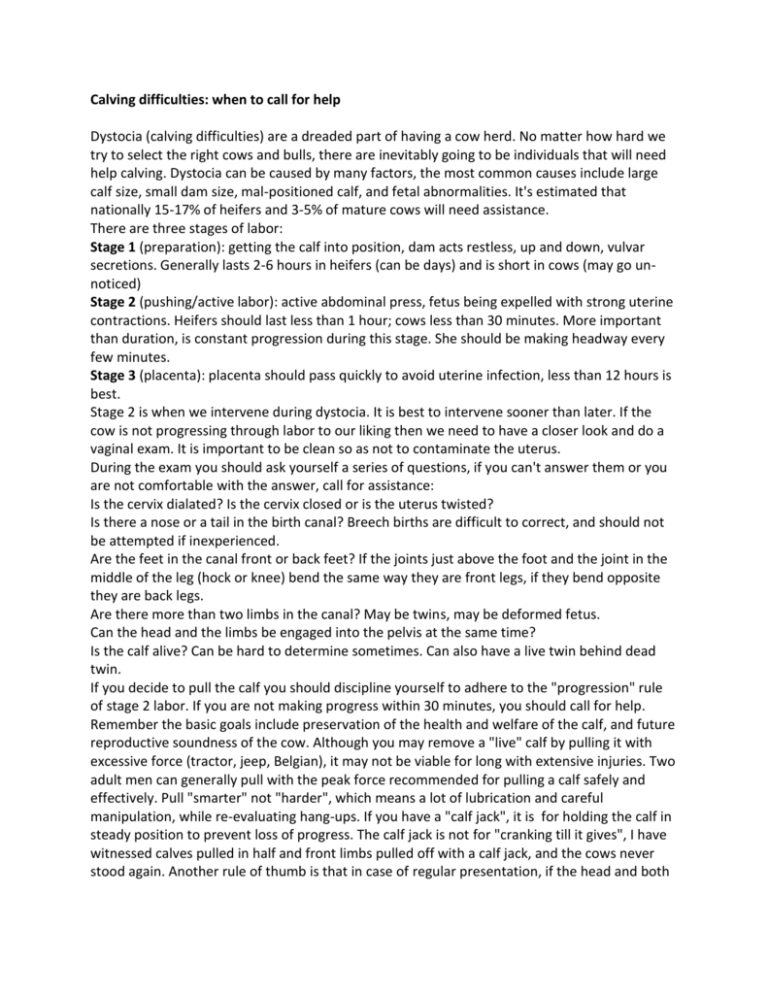
Calving difficulties: when to call for help Dystocia (calving difficulties) are a dreaded part of having a cow herd. No matter how hard we try to select the right cows and bulls, there are inevitably going to be individuals that will need help calving. Dystocia can be caused by many factors, the most common causes include large calf size, small dam size, mal-positioned calf, and fetal abnormalities. It's estimated that nationally 15-17% of heifers and 3-5% of mature cows will need assistance. There are three stages of labor: Stage 1 (preparation): getting the calf into position, dam acts restless, up and down, vulvar secretions. Generally lasts 2-6 hours in heifers (can be days) and is short in cows (may go unnoticed) Stage 2 (pushing/active labor): active abdominal press, fetus being expelled with strong uterine contractions. Heifers should last less than 1 hour; cows less than 30 minutes. More important than duration, is constant progression during this stage. She should be making headway every few minutes. Stage 3 (placenta): placenta should pass quickly to avoid uterine infection, less than 12 hours is best. Stage 2 is when we intervene during dystocia. It is best to intervene sooner than later. If the cow is not progressing through labor to our liking then we need to have a closer look and do a vaginal exam. It is important to be clean so as not to contaminate the uterus. During the exam you should ask yourself a series of questions, if you can't answer them or you are not comfortable with the answer, call for assistance: Is the cervix dialated? Is the cervix closed or is the uterus twisted? Is there a nose or a tail in the birth canal? Breech births are difficult to correct, and should not be attempted if inexperienced. Are the feet in the canal front or back feet? If the joints just above the foot and the joint in the middle of the leg (hock or knee) bend the same way they are front legs, if they bend opposite they are back legs. Are there more than two limbs in the canal? May be twins, may be deformed fetus. Can the head and the limbs be engaged into the pelvis at the same time? Is the calf alive? Can be hard to determine sometimes. Can also have a live twin behind dead twin. If you decide to pull the calf you should discipline yourself to adhere to the "progression" rule of stage 2 labor. If you are not making progress within 30 minutes, you should call for help. Remember the basic goals include preservation of the health and welfare of the calf, and future reproductive soundness of the cow. Although you may remove a "live" calf by pulling it with excessive force (tractor, jeep, Belgian), it may not be viable for long with extensive injuries. Two adult men can generally pull with the peak force recommended for pulling a calf safely and effectively. Pull "smarter" not "harder", which means a lot of lubrication and careful manipulation, while re-evaluating hang-ups. If you have a "calf jack", it is for holding the calf in steady position to prevent loss of progress. The calf jack is not for "cranking till it gives", I have witnessed calves pulled in half and front limbs pulled off with a calf jack, and the cows never stood again. Another rule of thumb is that in case of regular presentation, if the head and both forelimbs (not just feet) cannot be engaged in the birth canal at the same time, the calf is almost certainly too large for vaginal delivery. If at any time you have any doubt, call the vet. There is no such thing as too soon, even if you just discuss your findings with the vet and he gives you recommendations. Don't force it! Monitor cows closely, recognize signs and stages of labor, evaluate suspected problems closely. If you plan on pulling, look at a clock and adhere to the progression rule.

